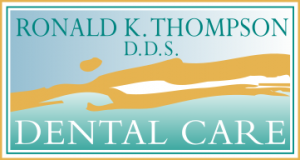Teeth root exposure is a dental emergency. When left untreated, it can lead to infection and even tooth loss. Fortunately, you can take steps to prevent the condition before it happens.
But what exactly is tooth root exposure, and why does it happen? This article explains what you need to know about this dental problem and how you can help prevent it from happening. Root exposure occurs when the soft tissue (called the periodontal ligament) that connects your teeth to your jaw becomes torn or ripped away.
When this happens, the roots of your teeth become exposed and more prone to decay, infection, and other dental problems.
Teeth Roots Exposed: What’s Going On?
When you have a dental emergency, your dentist will carefully assess the tooth to figure out what’s happening. The first step is determining if the tooth is loose or if the root is exposed. Several situations can cause a tooth to become loose due to tooth root exposure. They include:
Tooth Decay
Decay can eat away at the teeth and cause them to becoxme loose. The buildup of cavities is the primary reason for tooth decay, leading to tooth root exposure when left untreated.
Tooth Fracture
If the tooth is cracked or chipped, it will likely be loose. When nothing is done with the damaged tooth, it may become loose as the gums pull away from it, exposing the tooth root.
Periodontal Disease
If gum disease has progressed to the point where the bone is affected, the tooth might be loose. Periodontal disease is usually caused by an infection and inflammation of the gums that leads to tooth root exposure.
Tooth Resorption
Some medical conditions can cause the tooth’s root to be resorbed by the body, making it lose its strength. When this happens, the extreme loss of the tooth’s dentin and cementum will lead to tooth root exposure.
Impacted Tooth
If the tooth has become trapped beneath the gum and will not move, it may become loose. An impacted tooth is usually caused when there isn’t enough room for the tooth to grow, leaving your gums pulling away.
Tooth Extraction
If you’ve had a tooth extracted, the root is still there, even if you can’t see it. The tooth root left embedded under the gums can still be infected when not extracted.
Recognizing When A Root Is Exposed
Your dentist will examine the tooth to determine if the root is exposed. If they see that the tissue around the tooth has been pulled away from the root, then they’ll be able to tell you if your tooth is loose or if the root is exposed.
Sometimes, a tooth is loose, but the root is not exposed. In these cases, the dentist will likely instruct you on how to handle the situation until they can get you in for an appointment.
If the root is exposed, your dentist will likely put a provisional (temporary) filling in the tooth to protect the root while they get you into the office to get your situation under control.
Typical Symptoms Of An Exposed Tooth Root
If the root is exposed, you might notice you’re having problems chewing food. This is because the exposed root is soft, fragile, and sensitive. You may also notice that the exposed root is discolored. In some cases, you may be able to see the root itself sticking out of the gum.
Be On The Look Out For These Causes (and How to Avoid Them)!
As your dentist examines your teeth, they will likely try to determine what caused the root to become exposed in the first place. Sometimes, the root is exposed because the gum has receded. In others, the root may have become exposed because of decay, gum disease, or other factors.
What caused your roots to become exposed? Your dentist should be able to tell you by the appearance of the exposed root. If your root is discolored, it may have become decayed. If your roots have a rounded appearance, this may mean that gum disease is present.
Options For Fixing Your Exposed Tooth Root
Once your dentist has determined the cause of your exposed root and what needs to be done to fix it, they will likely go with one of the following options: If your root is exposed because the gum has receded, your dentist will likely go in and clean the root area.
They will then use sutures or surgical glue to close the wound and hold the gum. This will help the gum reattach to the tooth and avoid future problems. If the root has decayed, your dentist may need to perform a root canal.
The dentist will go into the tooth and clean out the decay in this procedure. They will then fill the tooth with a unique solution to prevent bacteria from returning. This will allow the tooth to heal and reattach to the surrounding tissue. If gum disease puts your teeth at risk, your dentist may use laser therapy to kill the bacteria.
Suggestions for an Exposed Root Treatment
Practicing good oral hygiene is the best way to avoid root exposure and other dental problems. Your dentist will likely recommend that you brush twice a day for two minutes each time. It would help if you also floss once a day. Your dentist may recommend that you visit their office for regular cleanings. These appointments will help prevent cavities, gum disease, and other problems that can lead to tooth root exposure.
If you have an exposed tooth root, your dentist will likely advise you on how to handle the situation best until you can get into the office. To avoid the problem next time, make sure to:
- Brush your teeth twice daily. This will help remove food and plaque.
- Floss your teeth once a day. This will help remove food particles you cannot reach with a toothbrush.
- Avoid sugary and starchy foods, as these can lead to tooth decay.
- Visit the dentist for regular check-ups. This way, you’ll be able to catch and treat problems before they become serious.
- See your dentist if you have any dental pain. This is a sign that something is wrong and needs attention.
- Avoid traumatic situations that could cause a tooth to become loose.
When Roots Are Exposed Too Far For An Easy Fix
If the root has become so exposed that a simple cleaning and dressing won’t fix the problem, your dentist may need to remove the tooth. In these cases, your dentist will likely recommend that you see an oral surgeon. After examining the tooth, the oral surgeon will likely recommend one of the following:
Extraction
The oral surgeon will likely recommend extraction in cases where the root is severely decayed, infected, or otherwise beyond repair.
Graft
In some cases, your dentist may be able to reattach the tooth to its roots by grafting the bone and adding more volume and density to areas where there is bone loss.
Bridge
Sometimes, the surgeon will use a tooth on either side of the exposed root to anchor a bridge. This bridge will connect the root to an artificial tooth.
Implant
In some cases, the surgeon can implant a replacement tooth to complete your smile.
An Exposed Tooth Root Gets You To the Dentist; Now It’s Your Turn to Keep Your Teeth Healthy
A healthy smile is an essential part of a person’s overall health. After all, it tells the world how you take care of yourself and what kind of lifestyle you lead. On top of that, it can help you to get more confident in social situations and make you more attractive to potential employers.
That’s why it’s so important to keep your teeth healthy. One of the easiest ways to do this is by visiting your dentist regularly. A regular trip to the dentist can help keep harmful bacteria inside the mouth at bay.
This way, you’ll be able to avoid any problems in the future.
Contact East Valley Dental Care For Your Next Dental Visit
Keeping your teeth clean is the best way to express your confidence and increase self-esteem! Make an appointment with East Valley Dental Care to have your teeth checked out. Our dentists and staff will help you take care of your teeth, resulting in a smile you can be proud of! For more information, please visit eastvalleydentalcare.com/.
If you want to maintain good health, it is imperative that you look after your teeth and gums. A beautiful smile can boost your confidence and help you feel at home with others.





